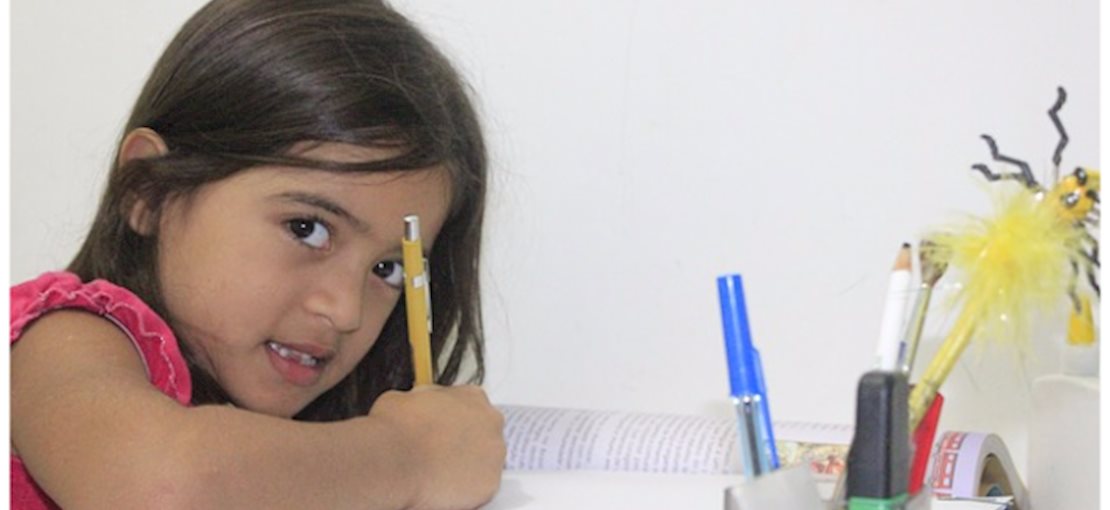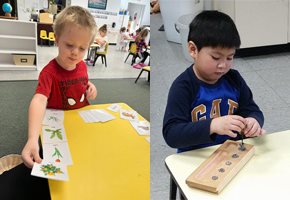As children move through school, the reading demands increase rapidly. All subjects - History, English, Science, even Math, eventually integrate reading. For many students, these rising language and reading demands can be challenging. For children with dyslexia, however, the demands can seem utterly insurmountable. Help your dyslexic child thrive in school with the ideas detailed below.
Build his phonics skills
Children with dyslexia typically have trouble decoding, or sounding out, words. Many dyslexic students may look at the beginning sound and guess at the correct word or skip certain words when reading. As a result, their reading becomes inaccurate and they may not understand the gist of the sentence or passage. To build stronger phonics skills, your child will likely benefit from structured, multi-sensory instruction in reading, but you can help develop these skills by encouraging him to sound out shorter words and break down longer words when reading, instead of guessing. For a young child, have him practice tracing letters in colored sand, sugar, or shaving cream for a kinesthetic experience. If your child struggles to spell a word, instead of simply providing the correct spelling, use flash cards containing letters or magnetic tiles and ask him to spell the word in a sound-by-sound manner.
Develop her fluency skills
Reading fluency is an important part of reading for meaning. You can help your child develop her reading fluency using a four step choral reading process:
1. Choose a passage to read, a bit below your child’s reading level. Ask her to read the passage out loud as a cold read.
2. Next, you read the same passage out loud to model appropriate fluency.
3. Have her read the same passage with you, keeping up with your pace.
4. Finally, have her read the same passage aloud as a final read. Point out the difference between her first and final reads and praise her progress.
Enhance Active Reading & Comprehension
Active reading skills play an important role in nearly all aspects of school. To develop this skill, have your child review any headers, pictures, picture captions, and vocabulary words prior to reading a passage or book selection. You can also discuss prior knowledge he may have about the topic before reading, and have him tell you what he thinks the passage will be about before he begins. Additionally, as he reads, teach him to highlight the topic (one, two, or three words describing the passage) in blue, main idea (what the author is saying about the topic) in green, and the important details (salient information describing the main idea) in yellow. These types of active reading strategies can help improve your child's comprehension skills and overall performance in school.
Build a Stronger Vocabulary
Dyslexic children often respond well to visual approaches to instruction. To help your dyslexic child learn new vocabulary words, try this technique:
Tell her to write each vocabulary word on the front of a note card. Then have her flip the card around and separate the back side into three horizontal sections. At the top, she should write the meaning of the word in her own words (not word-for-word from a dictionary). She should then draw a horizontal line beneath it, and write a descriptive sentence using the word. Finally, at the bottom of the note card, she should draw a picture illustrating her sentence to help her visualize and remember the definition.
As the demands of school increase, so too can the struggles that your dyslexic child faces. Teach your child these tips and she will soon feel confident and successful in school.
EBL Coaching
50 East Palisade Avenue, Suite 201
Englewood, NJ 07631
(201) 567-8988
eblcoaching.com






Add A Comment
Thank you for your comment.
Sorry! There was a problem with your comment submission. Please try again.
Comment
Allowed HTML: <b>, <i>, <u>, <a>
Comments
Thank you for your comment.
Sorry! There was a problem with your comment submission. Please try again.
Thank you for your comment.
Sorry! There was a problem with your comment submission. Please try again.